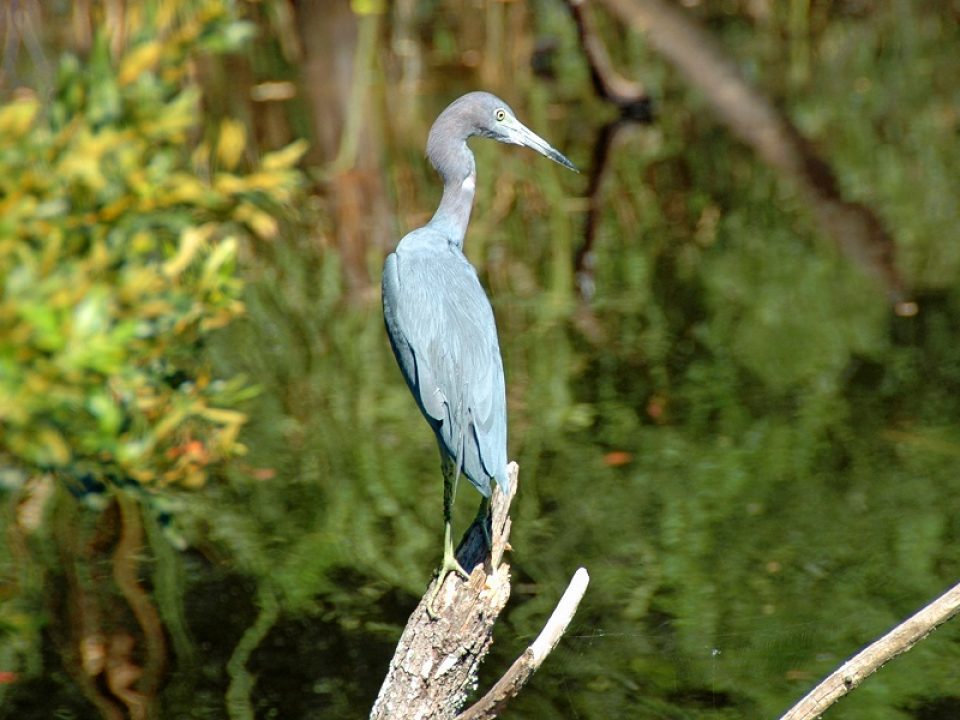Hilton Head is a naturalist’s dream with tidal zones, salt marshes and an abundance of flora and fauna. The ecosystems are robust, fascinating and filled with opportunities to explore and learn about life on the island for resident birds, gators and more. The public spaces also make it easy to travel by land or water while observing and soaking and soaking in the natural surroundings.
The Ecosystems
Salt marshes are the biggest ecosystem influencing the island but you will also find freshwater marshes, wetland forests and tidal zones. The saltwater marshes are essential for local wildlife and the lowland sections often flood, allowing marine life to enter and feed on the special cordgrass. The higher marshes flood less frequently and host several additional critical plant species along with a number of interesting marine and wildlife species.
The freshwater marshes account for far less space on the island but they remain critical, providing freshwater and specialized habitat for mammals, reptiles and fish. The freshwater lagoons are stable in terms of water levels and are frequented by resident and migratory bird species, making them an excellent option for birders.
Freshwater forested wetlands are entirely different, occupying the interior and higher ground zones of the island. This habitat is protected as it supplies essential freshwater resources for much of the wildlife in these interior zones. Development has reduced the amount of forested wetlands remaining and cherished trees are now protected to keep these forests intact.
Follow the Birds
Bird life is fantastic on Hilton Head and you will find species inhabiting and passing through every ecosystem available. Egrets, osprey, herons and laughing gulls are all commonly viewed residents. The great egrets are especially nice to watch and spot with their visible white feathers and the laughing gulls are hard to miss with their rambunctious voices. Pileated woodpeckers occupy the forested zones while woodstorks live in the salt marshes. While the pileated woodpeckers are well known and easy to spot, several other woodpecker species also live here. Red-bellied and red-headed woodpeckers are both beautiful and you might spot a few flickers while looking for woodpeckers as well. Owl lovers can spend their time searching for great horned, snowy, short-eared, long eared, eastern screech owl and barn owls.
The Hilton Head Island Birding trail offers visitors easy to locate bridging areas. Visit hiltonheadislandbirdingtrail.org and choose a region to generate a list of bird viewing locations. The designated and protected nature areas are favorites but some of the best saltwater marsh habitat also coincides with golf courses and resort areas.
Wildlife Species
Reptiles like alligators and snapping turtles are visible and exciting species to locate. Whitetail Deer are also bounding through the fields and forests. Foxes, coyotes, bobcats, otters, raccoons and squirrels live on the land and in/around the water. Marine wildlife offers a fascinating view into ocean life and you can find bottlenose dolphins, harbour porpoise, short-finned pilot whales and even pygmy sperm whales. Manatees are a favorite species as well and you will see these gentle giants feeding on grass in the saltwater marshes.
The Pinckney Island National Wildlife Refuge, Sea Pines Forest Preserve and Audubon Newhall Preserve are all great for wildlife. You will also see many species living alongside the locals however so always keep your eyes peeled while using the walking paths and exploring the open space areas.
Important Plant Life
The native smooth cordgrass fills the saltwater marshes and is essential for many species. Manatees are especially dependent on the grass and it’s one reason you will see them visibly swimming and resting in the marshes. Head a little higher in the saltwater marshes and the black needlerush and sea oxeye become prominent. These three plant species are all essential for life in the saltwater marshes.
Freshwater marshes host a wider variety of plants with rushes, wax myrtle, sedges and cattails. The freshwater systems have more plants because they are not affected by tides. The ability to thrive without being specialized allows for more species in the freshwater. The Sea Pines Forest Reserve is a prominent freshwater marsh on the island.
The forested wetlands are especially interesting with red maple, pine trees, sweet gum and black gum. The forest plants depend heavily on water and you will find ferns, fetterbush, wax myrtle and a myriad of other species. This ecosystem is fascinating and it supports a swath of birds, mammals, reptiles and life in general.
